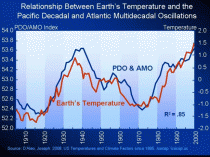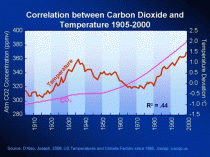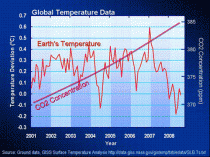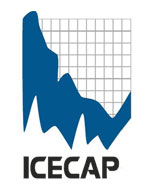By David R. Legates
As the climate scare fizzles, Canada’s celebrity environmentalist resorts to ad hominem attacks
David Suzuki has never met, debated or even spoken with my colleague, scientist Willie Soon. But as more people dismiss Mr. Suzuki’s scare stories about global warming cataclysms, the more he has resorted to personal attacks against Mr. Soon and others who disagree with him.
Mr. Soon’s brilliant research into the sun’s role in climate change has helped make millions aware that carbon dioxide’s influence is far less than Mr. Suzuki wants them to think. In a recent column picked up by media outlets around North America, including Huffington Post, Mr. Suzuki attacked Mr. Soon, my fellow scientist, mostly by recycling a Greenpeace “investigation” that is itself nothing more than a rehash of tiresome (and libelous) misstatements, red herrings and outright lies. It’s time to set the record straight.
First, there’s the alleged corporate cash misrepresentation. Mr. Suzuki claims Mr. Soon received “more than $1 million over the past decade” from U.S energy companies - and implies that Mr. Soon lied to a U.S. Senate committee about the funding. In fact, the research grants were received in the years following the Senate hearing. Moreover, the Harvard-Smithsonian Center for Astrophysics took nearly half of the money (for “administration"), and what was left covered Mr. Soon’s salary, research, and other expenses including even toner for his printer.
Since Mr. Suzuki raised the subject of corporate cash, by comparison the Suzuki Foundation spends some $7 million every year on its “educational” and pressure campaigns - many of them in conjunction with various PR agencies, renewable energy companies, other foundations and environmental activist groups. Many stand to profit handsomely from Mr. Suzuki’s causes, especially “catastrophic climate change” and campaigns to replace “harmful” fossil fuels with subsidized, land-intensive, low-energy-output wind and solar facilities. Mr. Suzuki has appeared in advertisements for alternative energy sources in Ontario.
Mr. Suzuki is criticizing Mr. Soon and the Harvard-Smithsonian Institute for having done funded research - while alarmist climate catastrophe researchers share some $6 billion annually in U.S, and Canadian taxpayer money, and millions more in corporate funds, to link every natural phenomenon to global warming and promote renewable “alternatives” to fossil fuels.
If it is wrong to receive grants from organizations that have taken “advocacy” positions, then virtually every scientist with whom Mr. Suzuki has associated would be guilty. In his column Mr. Suzuki recognizes this point. “Some rightly point out that we should look at the science and now at who is paying for the research.” If he believes that the science, and not who is paying for research, is most important, then why does he continue to attack Willie Soon and others on the basis of their funding?
Second, Mr. Suzuki repeats an absurd Greenpeace claim that Mr. Soon tried to “undermine” the “peer-reviewed” work of the United Nations’ Intergovernmental Panel on Climate Change (IPCC). In reality, scientists are required to examine, review and even criticize other scientists’ research - especially when it is used to justify slashing the hydrocarbon energy on which employment, living standards and civilization depend. Indeed, the IPCC solicits reviews of its publications but is under no obligation to address any criticisms that scientists raise - in contrast to the normal peer-review process
Unfortunately, the IPCC has refused to conduct its own quality control - and has repeatedly promoted scare stories about rising seas, melting Himalayan glaciers, disappearing Amazon rainforests, more severe storms and droughts, and other disasters. By now anyone familiar with the Climategate and IPCC scandals knows these headline-grabbing claims are based on nothing more than exaggerated computer model outputs, deliberate exclusion of contrary findings, questionable air temperature station locations, and even “research” by environmental activists such as the World Wildlife Fund.
The Climategate emails made it clear that the truth was even worse. The emails paint a vivid picture of advocacy scientists strong-arming the publisher of a science journal, Climate Research, against publishing the work of Willie Soon and his associate, Sallie Baliunas. Pro-IPCC scientists threatened to boycott the journal, and intimidated or colluded with editors and grant program officers to channel funding, published only the work of advocacy scientists and rejected funding requests and publications from any scientists who disagreed with them on global warming. Mr. Suzuki’s efforts mirror their campaign - and no wonder.
The global warming scare has fizzled. The sun has entered a new “quiet” phase, and average global temperatures have been stable for 15 years. Climate conferences in Copenhagen and elsewhere have gone nowhere. Kyoto has become little more than a footnote in history. Countries that agreed to “climate stabilization” policies are retreating from that untenable position. The public realizes that climate science is far from “settled.” The climate-chaos religion is about to go the way of Baal-worship.
Most important, Canadians, Americans and Europeans alike are beginning to realize that the real dangers are not from global warming. They are from potentially cooler global temperatures that could hamstring agriculture - and from government (and Suzuki-advocated) policies that are driving energy prices so high that companies are sending jobs to Asia, and millions of families can no longer afford to heat and cool their homes, drive their cars or pay for the electricity that powers all the wondrous technologies that make our lives infinitely better, safer and healthier than even kings and queens enjoyed just a century ago.
Mr. David R. Legates is Professor of Climatology at the University of Delaware. He has worked with Mr. Willie Soon since they were the first to uncover the flaws in the so-called ‘Hockey Stick’ in 2002.
UPDATE:
Tom Nelson reported Joe Romm of Think Progress spouted off after Joe Bastardi’s Saturday morning FOX appearance in which he was asked to comment on CO2 and global climate changes. “Joe Bastardi Pulls a Charlie Sheen on Fox News, Pushing “Utter Nonsense” on Climate Science”. Joe proves again why he and Heidi Cullen (and throw in Obama) are the worst investments the billionair George Soros ever made.
Joe R. began :Those who watched Fox News over the weekend were treated to a brief but ambitious science lesson on “Why CO2 Can’t Cause Warming”:Oh boy. Let’s take these one at a time.” He went on to show how little Romm knows about climate. Gore also sounded off in obscenties this weekend. A new Rasmussen poll shows the American public trusts the objectivity and credibility of impassioned global warming “scientists” about as much as used car salesmen, and boy is Al Gore ticked. If Michele Bachmann is Newsweek‘s Queen of Rage, Al Gore must be America’s potty-mouthed King of Bizarre Temper Tantrums.
While the sinking credibility of activist scientists is primarily due to documented scientific misconduct, it can’t help that the public face of global warming alarmism is an increasingly bizarre, tantrumatic potty-mouth who habitually lectures down to the American people like they are morally inferior beings. I am not a big cheerleader for the “Sky Is Falling” global warming campaign, but I can’t help but offer the following advice: You really need to get yourselves a new spokesperson. Tom Nelson.
Joe Bastardi responded…
The PDO changes, sunspot activity is down from the max around 2000. The Earths temps level out and co2 continues to rise. To the folks at climate progress.. if co2 is causing the temperature rise, why is it the temperatures have leveled off while co2 continues to rise, and the other 2 forcing mechanisms have changed. Where are the trapping hot spots at 400mb? Where is the positive feedback? Why is the temperature not in any of the IPCC ranges issued 20 years ago? Even Phil Jones admitted there has been no warming, so how can co2 be the cause? Where is the heat.. The ocean bottom, a cave somewhere? And how is it the satellites say it fine after the PDO switched to warm, but cant find it now?
By The way, I didnt see Joe Rohm or any of my other accusers in my thermodynamic classes at Penn State where I earned a degree in the University’s prime, graduating 2/3 rds of the worlds meteorologists at the time. To my friends at climate progress, media matters, etc, its a simple test.. If the earth’s temps fall back to where they were in the 70s by 2030, because of the changes in the oceanic cycles, which have been warm since the start of the satellite era, then what we are seeing now will be proven, co2 has nothing to do with it. If temps rise, in the face of the major drivers that have turned around ( oceanic, solar) as measured by OBJECTIVE SATELLITE MEASUREMENTS, WHICH WE HAVE ONLY HAD SINCE THE 70S) then co2 has something, if not almost everything to do with it. HERE IS THE PROBLEM. There is no answer you will admit to being wrong. I will at least admit I am wrong if my simple test doesn’t do what i say. Mine involves logic, reason, and basic laws of science, and as I said before, I did not see any of my critics in any meteorology or atmospheric chemistry class.
So that is my challenge. Temps have leveled off, co2 is continuing to rise. If you cant admit you are wrong about that, let us all know what we have to see for you to admit you are wrong.
I suspect we wont get an answer, since everything that happens, even if it cools, will be an answer they will claim they were right about
And by the way, Quit lying about me. I am all for any and all energy use that will make our world cleaner and energy cheaper. I am all for energy independence. I could care less where it comes from, because you still have to know if its going to be cold or warm, and how much you need to use. Windfarms for instance are a meteorologists dream since not only do they need to know the result of the weather, but the actual weather, so its a first and second derivative. The same with the solar ideas. Personally , I like the idea of on site wind and solar sufficiency, empowering your own home to reduce cost, but to me this is a forecast. Obviously for you its something completely different, and because it is, it is you, not me, that doesn’t take the facts into account.
-------------------
By P Gosselin on 8. August 2011
First, regrettably, while I was on holidays in the US, Joe Bastardi sent me something he wanted posted and it wasn’t until this morning that I discovered it in my spam. So I’m a little late getting this out, and maybe this already got published at other sites in the meantime. Oh well, in any case, without further ado, here it is. Joe has got some questions.
How Do The AGW People Get Away With This?
By Joe Bastardi
A few graphics make the position of the AGW people completely absurd. It’s why I am so confident as to my position on this matter, and by the way it does have something to do with the weather because if you know where the weather has been, you have a better chance to know where it’s going.
Exhibit one, from my co-partner here at WeatherBell Joe D’Aleo ( I wonder if we will share the same cell when the warmingistas come to get us. And will they let us have the same tattoo artist to brand us deniers?)

PDO and AMO are strongly correlated to the earths temps…now watch CO2 vs temps over the past century:

Even more damming than this, look at the past 10 years:

Or the last 15 years:

Which leads to the question: How do these people have any credibility? How do they get away with this? It’s mind boggling that its gotten to a point where the EPA is dictating policy based on what is an obvious fraud, or if you want to be gentle about it, creates enough doubt to back off.
Here is something to consider.
Over a year ago I advised a client of mine at the time to purchase less air conditioners than for 2010 because the summer of 2011 would be cooler than the summer of 2010. Now there is talk that this is going to turn out like last summer, but assuming it won’t, the forecast was made. BEFORE LAST SUMMER. The client had to put in their order for air conditioners a year beforehand because they were ordering them FROM CHINA.
Now every red blooded American gets up in arms because all those jobs should be here in USA, right? But why aren’t they? Well in large part because of policy that is based on absurdities like this, a factory making anything here is now being clamped down on by the EPA so hard, so why bother? Its like Obama said: ” So, if somebody wants to build a coal plant, they can, it’s just that it will bankrupt them because they are going to be charged a huge sum for all the greenhouse gas that will get emitted”.
That is a direct quote and is like his energy Sec saying that they seek to take away choices that people waste their money on. Astounding that things like that are being pushed by people in control, or that they even got control in the first place. That is our fault, based on what is obviously flat out nonsense. But combine that with labor costs, and the fact the that the corporate tax rate in the US is higher than China, which few people in our nation seem to get, and this is what happens.
Now let’s say we wanted to make sure that a person here working in an air conditioner factory can make a decent wage from a helping hand ( how do like my populist line…from the Ghost of Tom Joad?) Well, get rid of the EPA running roughshod over factory owners, and lower the corporate tax rate to below China’s ( it is so hard to believe that Chinese tax rates are lower) and you will find that companies will stay here and pay a decent wage to build air conditioners, But not if you are clamping down on people based on questionable, don’t-have-a-leg-to-stand-on ideas about co2 warming the planet.
Again, it defies logic as to how they got to where they did with this issue, and the facts are there for all to see.
Joe Bastardi runs the professional weather services company Weather BELL Analytics LLC together with Joe D Aleo.
How the green movement is damaging the global economy and threatens populations worldwide
Before you accuse me and my realist colleagues of not caring about the future of our planet or our children and grandchildren, every climate realist I know is an environmentalist. Given the vigorous demands of merit referencing that definition, an objective inspection finds that to be true. We have worked diligently to build a world economic framework that our children and grandchildren can benefit from and build upon.
We live an energy and resource efficient lifestyle. We recycle and don’t debase the environment. In fact we treasure time spent within nature. We arrive from all sides of the political spectrum.
We share skepticism that man plays a dangerous role in climate change. We believe in natural cycles but don’t all agree on what factors play the most important roles. The fact we are monolithic in our views is testament to the fact we follow the scientific method in which skepticism is critical and an open mind to empirical data is the path to the truth. We trust observational data and not man-made models that can politicized to convey a political manifesto. Presently, our’s and the future of our families are threatened not by our skepticism or resistance to major changes they want to place on our world by those in power, but by the environmentally driven policies that our governments worldwide have enacted.
The usurpation of the environmental movement by those with a social and political agenda has led to counterproductive energy policies with unrealistic reliance on undependable and prohibitively expensive and non sustainable “renewables”. Wind and solar substitutes for fossil fuels and nuclear, even hydropower make no sense economically requiring massive state subsidies during a time of critical resources. And in no location have these sources proven reliable enough to replace fossil fuel plants. Instead, they must be kept in inefficient ready back-up mode and every country has seen increased carbon dioxide emissions. Whatsmore, instead of lowering energy costs, in the end, worldwide they have led to great increases of energy prices which have stressed the public, especially pensioners and low and even middle income families. The high cost of energy and unnecessary regulations are causing industries to flee overseas to India to China where energy and labor costs are manageable.
Globally, the ‘green job’ revolution has been an abject failure wherever it has been enacted.
In Spain, for every green job created, 2.2 real jobs were lost. Only 1 in 10 green jobs were permanent. Unemployment reached 20.89% last month, the highest single country rate in the world. In Italy, 3.4 real jobs were lost for every green job created. This unwise energy policy and the socialist entitlement programs have devastated individual freedom and economies.
Strong budget changes including the cessation of subsidies for renewables and cutbacks on entitlement programs have been instituted to stem the tide of economic decay. In the UK, major cutbacks are being implemented and changes to their energy policies are being debated.
It is little surprise that Italy and Spain are in daily headlines decrying bailouts from the EU as riots spread through streets and neighborhoods in the UK as witnessed in Greece as economic reality forced painful remediation.
These same environmental groups earlier led to the ban of DDT and are to blame for the tens of millions of malaria deaths in Africa, mostly children. DDT was a safe insecticide used here in the United States to control bed bugs; a remnant from over half a century ago. Bedbugs and their attending misery have returned here as well.
The increased energy costs are pushing more and more people into energy poverty. 26% of the Wales families are in that category. Another bad winter like the last 4 (last December was trhe second coldest since 1659 in the little ice Age) will lead to increasing cold deaths. In the United States, the EPA is pushing to increase regulation that would shut down fossil fuel power plants needed to keep the air conditioning or heating going during cold winters like the last two years and brutally hot summers like this one. Long lasting blackouts and brownouts would be deadly during these extremes.
Somehow NGOs like Greenpeace, WWF, EDF and the NRDC that have led in the green movement and pressured politicians and economists to adopt these now failed policies have escaped any blame.
Economists who hang onto the failed Kensyian policies like Stern, Krugman and politicians like Gilliard and Gore and Huhne who stubbornly stand by the failed science, economic theory and policies share the blame spotlight.
Instead of the polar bears and seals, they have created an ‘environment’ that makes humans endangered. We need to fight back against these merchants of debt and dissolution to preserve the future we have worked so hard to build for our families.


